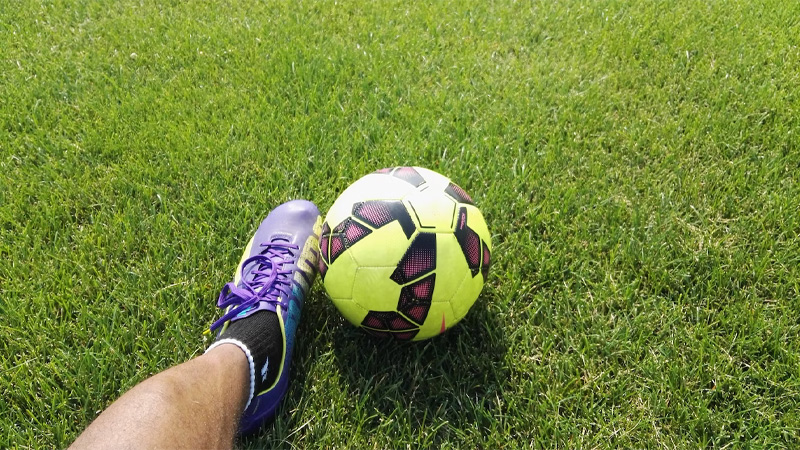Whether you’re a seasoned player or just starting your soccer journey, having the right gear is crucial for improving performance, staying safe, and enjoying the beautiful game to the fullest.
In this guide, we’ll walk you through the essential soccer equipment every player should consider adding to their kit. From injury prevention with athletic tape to ensuring fair play with substitution boards, we’ve got you covered.
Let’s dive into the frequently asked questions about soccer equipment and find out why these items are so vital for players of all levels.
Soccer Equipment List: 24 Things Every Player Should Have
From essential safety gear like athletic tape to game-enhancing tools, you can elevate your performance on the field with these 25 items.
1. Soccer Ball
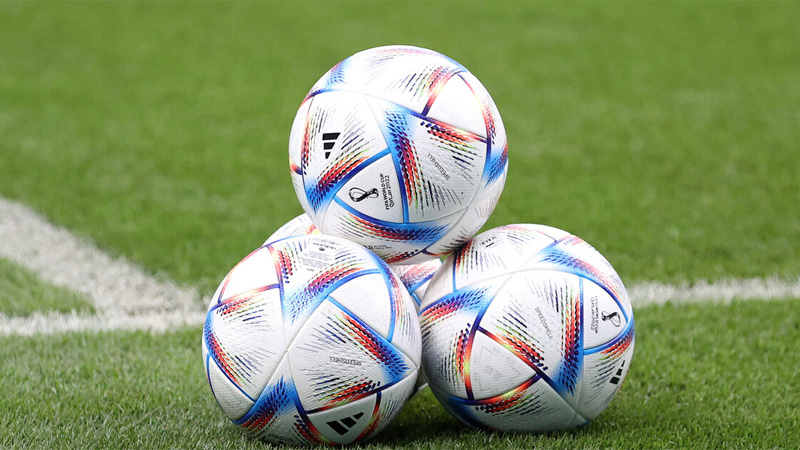
Source: al-monitor
The soccer ball is the fundamental piece of equipment for any soccer player. It is needed for obvious reasons, as the game revolves around using the ball to score goals and control the play.
The ball’s design, size, and weight are standardized by soccer governing bodies, ensuring fair and consistent gameplay. Players use their feet, head, and other parts of their body to maneuver and control the ball, showcasing their skills, technique, and creativity.
2. Soccer Cleats (Boots)
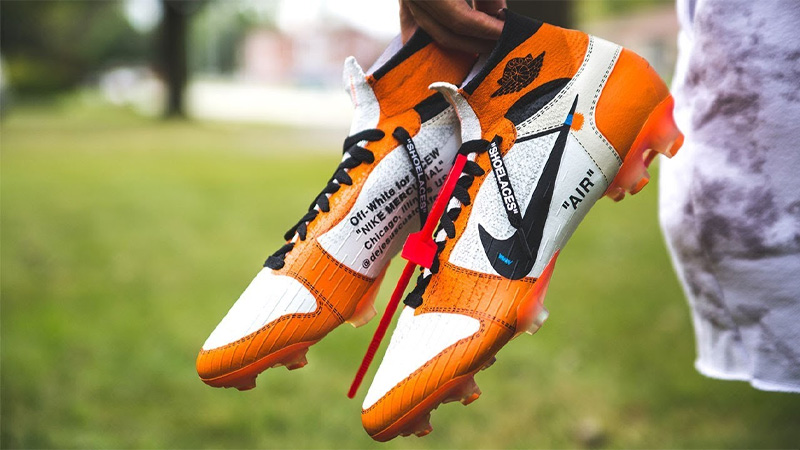
Soccer cleats are specialized footwear designed explicitly for the sport. They have unique features that provide players with essential benefits. The primary reasons why soccer cleats are necessary are:
- Traction: Soccer cleats have cleats (studs) on the sole that provide excellent grip and traction on grass or turf. This allows players to make quick movements, cuts, and changes in direction without slipping, reducing the risk of injuries.
- Support: Soccer cleats are designed to support the foot’s structure and help reduce the chances of sprains or twisted ankles during quick movements or sudden stops.
- Ball Control: The design of soccer cleats allows for better ball control and touch. The cleats’ shape and material enable players to get a good feel for the ball, making dribbling, passing, and shooting more precise.
- Performance: Soccer cleats are lightweight, which helps players maintain speed and agility throughout the game, enhancing their overall performance on the field.
3. Soccer Socks
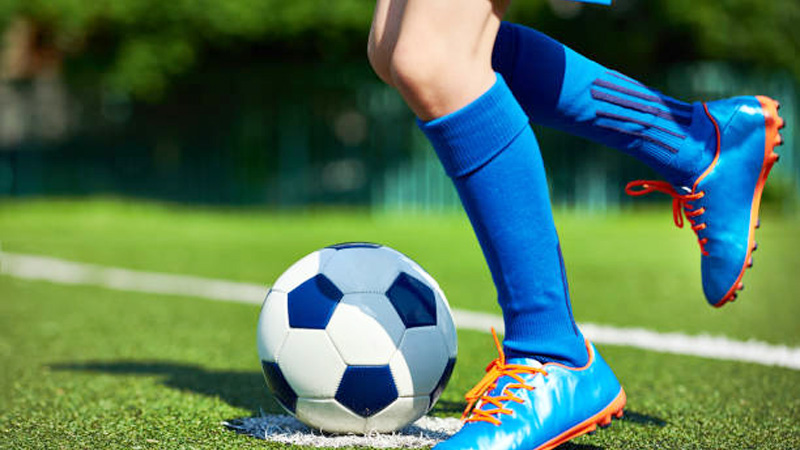
Source: istockphoto
Soccer socks may seem like a minor part of the outfit, but they serve several essential purposes for players:
- Protection: Soccer socks are usually made of thick, durable material, providing an additional layer of protection for the feet and legs. They help reduce friction and potential abrasions from the cleats.
- Holding Shin Guards in Place: Soccer socks are long enough to cover and hold the shin guards in place during the game. This prevents the shin guards from shifting, providing extra protection to the shins from impacts and tackles.
- Moisture Management: Quality soccer socks are designed to wick away moisture from the skin, keeping the feet dry and comfortable throughout the game.
4. Shin Guards
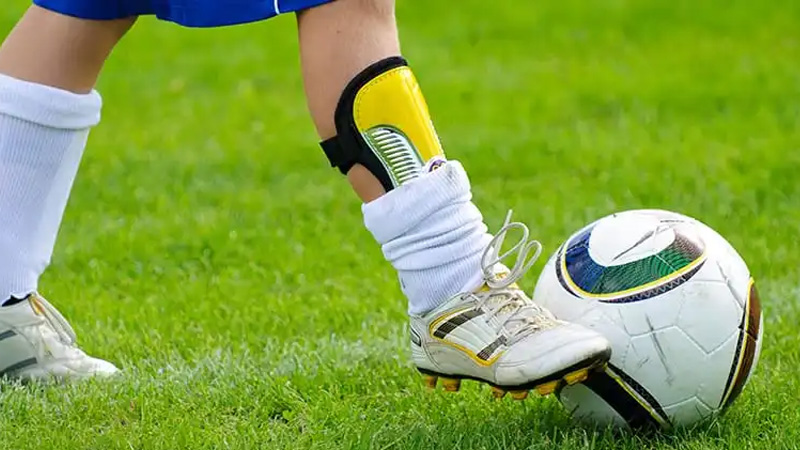
Souece: kreedon
Shin guards are vital for the safety of soccer players. They are worn under soccer socks and protect the shins from direct impacts and kicks, which are common in the sport.
Shin guards are typically made from strong yet lightweight materials and are designed to disperse the force of a blow, reducing the risk of serious injuries like fractures or contusions.
5. Soccer Jersey

Source: 24hfootnews
The soccer jersey is more than just a uniform; it serves multiple functions during a match:
- Identification: Jerseys help differentiate between teams, allowing players, officials, and spectators to identify their teammates and opponents easily.
- Comfort and Breathability: Quality soccer jerseys are made of breathable materials that wick away sweat, keeping players cool and comfortable during the game.
- Mobility: Soccer jerseys are designed to provide a wide range of motion, allowing players to move freely without hindrance.
- Sponsorship and Fan Support: Jerseys often display team logos, sponsor names, and player numbers. This provides an opportunity for sponsorships and also allows fans to support their favorite players by wearing their jerseys.
6. Soccer Shorts
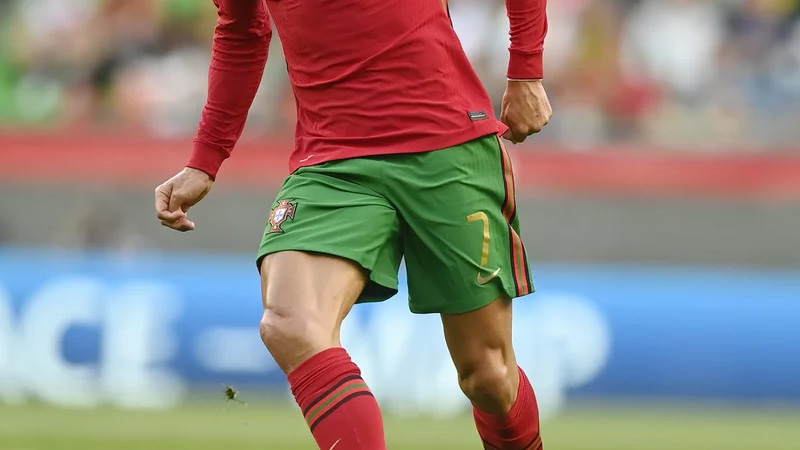
Source: isport
Soccer shorts, like the jersey, are an essential part of a player’s outfit. They offer several benefits:
- Mobility: Soccer shorts are typically loose-fitting and allow players to move their legs freely, enabling swift running, kicking, and agility.
- Comfort and Ventilation: Similar to jerseys, soccer shorts are made of breathable materials that provide ventilation and keep players comfortable during intense physical activity.
- Lightweight: The lightweight nature of soccer shorts ensures they do not weigh down players, allowing them to perform at their best without feeling restricted.
7. Goalkeeper Jersey
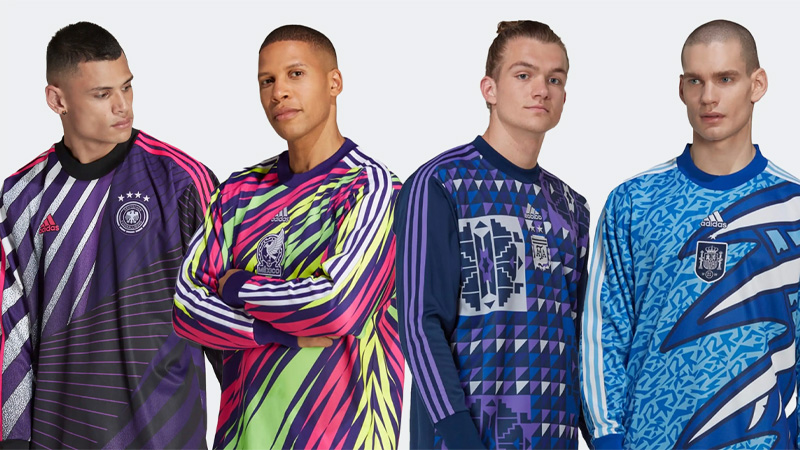
Source: goal
The goalkeeper jersey is an essential piece of soccer equipment specifically designed for the goalkeeper position. It differs from regular player jerseys by often having padded elbows and shoulders for added protection. The goalkeeper jersey is crucial for several reasons:
- Differentiation: The distinct color and design of the goalkeeper’s jersey set the goalkeeper apart from other players on the field. This differentiation helps teammates and opponents quickly identify the goalkeeper during a fast-paced game, reducing confusion and potential mishaps.
- Visibility: The bright and contrasting colors of goalkeeper jerseys make it easier for teammates to spot the goalkeeper’s movements, even from a distance. This is particularly important during intense moments when quick communication and coordination are vital.
- Padded Protection: Goalkeepers face unique physical challenges, diving and blocking shots throughout the game. The padded elbows and shoulders of the goalkeeper jersey offer extra protection against impact and friction, reducing the risk of injury.
8. Soccer Goal
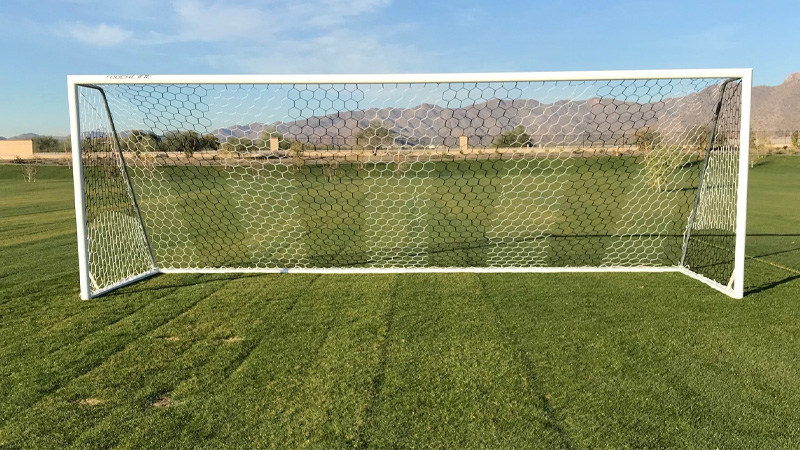
Source: garedsports
The soccer goal is, without a doubt, the most crucial equipment on the field, serving as the ultimate objective for both teams. Its significance lies in the following points:
- Scoring Purpose: The primary function of the soccer goal is to provide a designated target for players to shoot the ball and score goals. Scoring is the ultimate objective of the game, and the presence of the goal makes it possible.
- Tactical Importance: The presence of the goal dictates the strategies and tactics employed by both teams. It influences the positioning of players during attacks and defense, shaping the flow and intensity of the game.
- Outcome Determination: The number of goals scored by each team decides the winner of the match. As such, the soccer goal is the central element that determines the outcome of the game.
9. Corner Flags
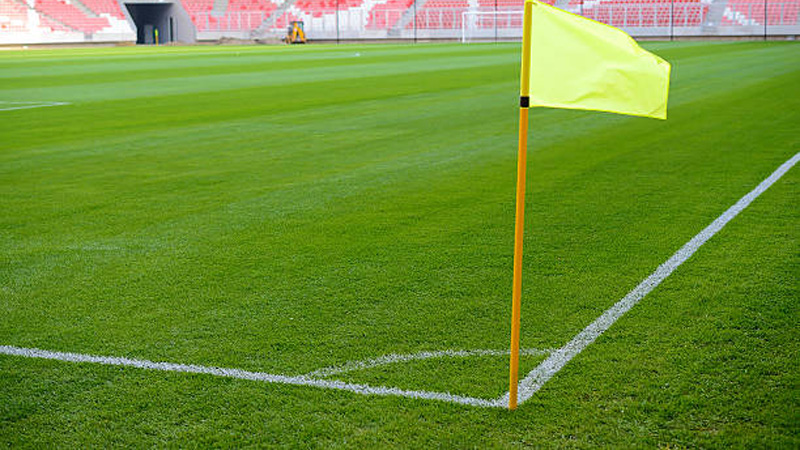
Source: istockphoto
Corner flags might seem like a minor detail, but they serve several crucial purposes during a soccer match:
- Corner Kicks: Corner flags mark the corners of the field, indicating where corner kicks are to be taken. Corner kicks provide attacking teams with an advantageous scoring opportunity, and the corner flags help the referee and players identify the exact spot for taking the kick.
- Boundary Markers: The corner flags help players and officials distinguish the boundaries of the field, especially in larger stadiums where the touchlines might not be clearly visible from certain angles.
10. Referee Whistle

Source: amazon
The referee whistle is an indispensable tool for the match official, and its significance lies in its multiple uses:
- Game Control: The referee whistle is used to start and stop play, giving the referee control over the flow of the game. It signals the beginning and end of each half, stoppages, and restarts.
- Foul Recognition: When a foul is committed, the referee’s whistle is blown to indicate the infraction, stopping the play and allowing the referee to take appropriate action (e.g., awarding a free-kick or penalty).
11. Referee Cards (Red and Yellow Cards)
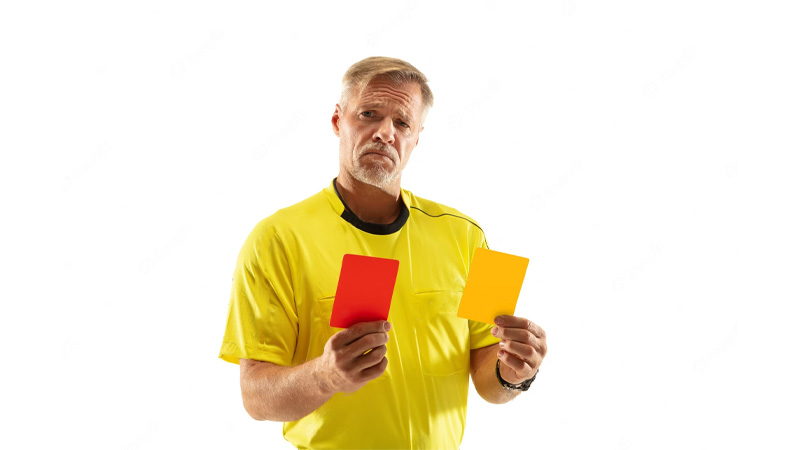
Source: freepik
Referee cards, specifically yellow and red cards, are crucial for maintaining discipline and fair play during a soccer match:
- Caution and Warning: The yellow card is shown by the referee to caution a player for committing a significant foul, unsporting behavior, or other infringements. It serves as a warning, indicating that further misconduct may result in a more severe penalty.
- Player Dismissal: The red card is shown by the referee to dismiss a player from the field. It is usually given for serious fouls, violent conduct, or accumulating two yellow cards in a single match. A red card forces the team to play with one player less for the remainder of the game.
12. Soccer Cones

Source: rgaalmer
Soccer cones are simple yet versatile equipment that serves various purposes:
- Training Tool: Coaches use cones to set up training drills and exercises, improving players’ dribbling, agility, and shooting skills. They help create boundaries and obstacles for players to navigate during practice.
- Field Markers: During practice or informal games, cones can be used to mark the boundaries of the playing area, particularly in situations where there are no permanent markings available.
- Warm-Up and Cool-Down: Players often use cones during warm-up and cool-down routines, helping them with stretching exercises and organizing running patterns.
13. Water Bottles
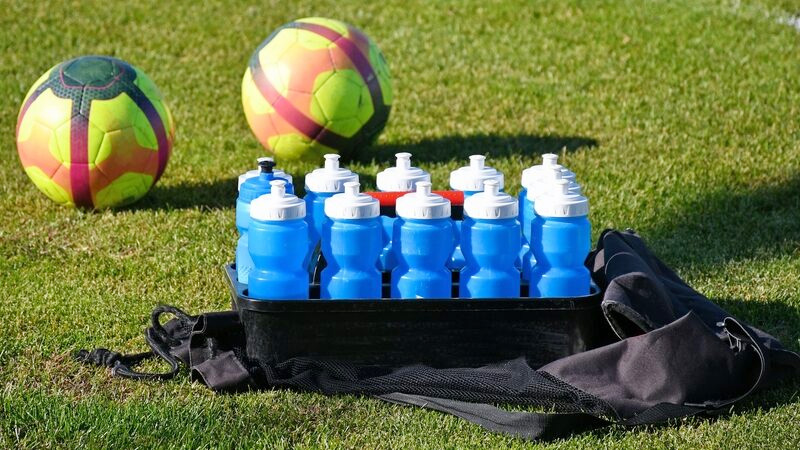
Source: soccerprime
Water bottles are an essential piece of soccer equipment for players because proper hydration is crucial for performance and safety. Soccer is a physically demanding sport that involves running, sprinting, and intense physical exertion.
Players can lose a significant amount of fluids through sweat during a match or training session, which can lead to dehydration if not replenished.
Benefits of water bottles for soccer players:
- Hydration: Staying hydrated ensures that players maintain their energy levels, mental focus, and overall performance throughout the game. Dehydration can lead to fatigue, decreased cognitive function, and an increased risk of injury.
- Regulating Body Temperature: Soccer is often played in hot and humid conditions, and proper hydration helps regulate body temperature and prevents overheating.
- Injury Prevention: Dehydrated players are more prone to muscle cramps, strains, and heat-related illnesses. Regular water breaks during training or matches can reduce the risk of these injuries.
14. Soccer Training Bibs (Pinnies)
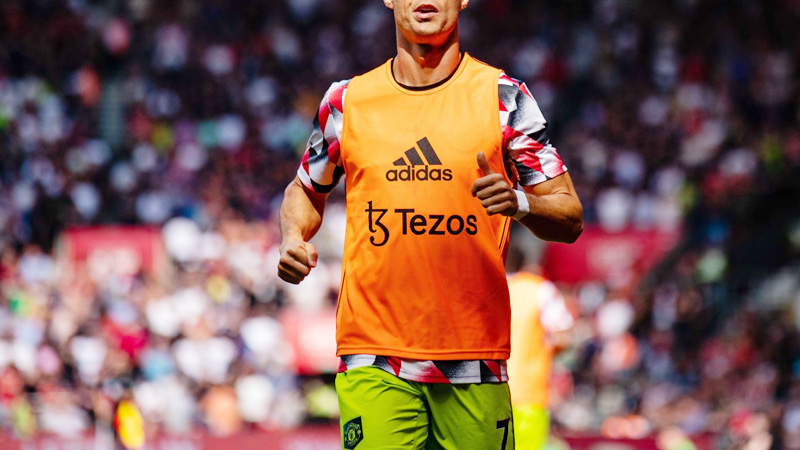
Source; talksport
Soccer training bibs, also known as pinnies, are brightly colored vests worn over a player’s regular jersey to distinguish teams during training sessions and drills. These bibs serve several important purposes:
- Team Identification: During practice sessions, teams may engage in drills or scrimmages involving multiple players. The bibs help differentiate between teams, making it easier for players to understand their roles and objectives.
- Tactical Understanding: Coaches can use different colored bibs to indicate specific roles or positions within a drill. For example, they can assign different colors to attackers, defenders, or midfielders, allowing players to understand and practice specific tactics.
- Enhancing Communication: The bright colors of the bibs make it easier for players to identify and communicate with their teammates, particularly during fast-paced training activities.
15. Soccer Training Equipment (Agility Ladder, Cones, Hurdles):
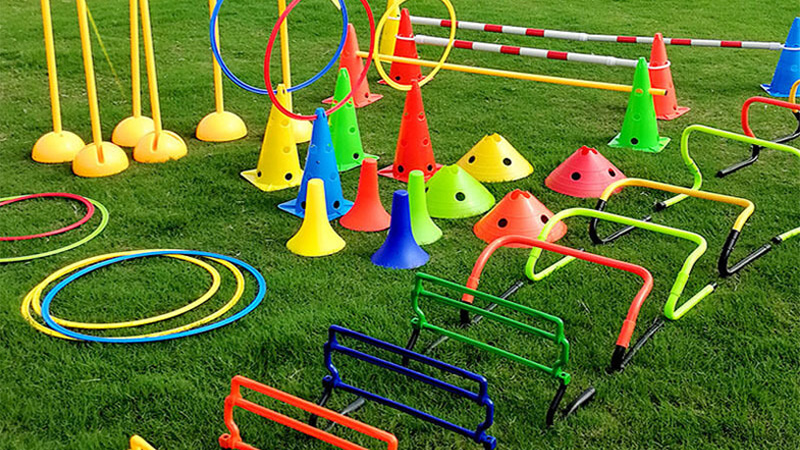
Source: lazada
Soccer training equipment like agility ladders, cones, and hurdles are fundamental tools for improving a player’s physical attributes and soccer-specific skills. These tools enhance a player’s agility, speed, balance, and coordination, which are essential for success on the field.
- Agility Ladder: An agility ladder is a flat ladder placed on the ground, and players perform quick footwork drills through its rungs. This helps improve foot speed, coordination, and lateral movement, enabling players to change direction rapidly during matches.
- Cones: Cones are versatile training tools used for various drills, such as dribbling, ball control, and marking out boundaries during practice. They aid in developing precision and accuracy in passing and shooting.
- Hurdles: Hurdles are small barriers that players can jump over during training. Hurdle drills improve lower body strength, explosive power, and jumping ability, all of which are advantageous for heading the ball and winning aerial duels.
16. Soccer Bag (to carry equipment)
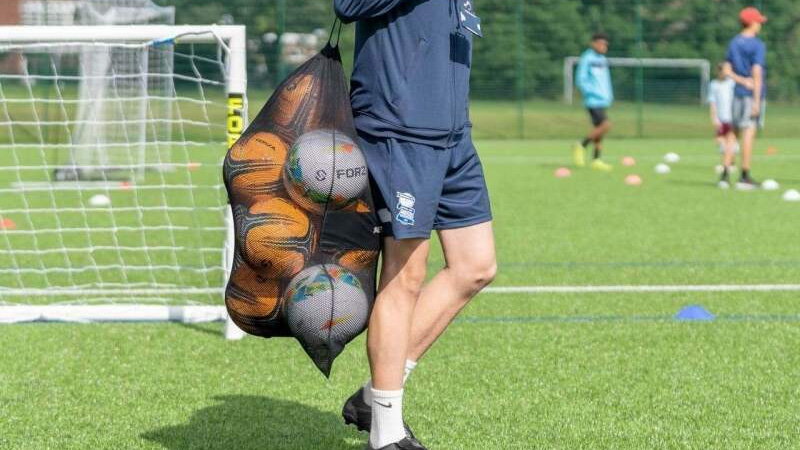
Source: networldsports
A soccer bag is a practical accessory that allows players to keep all their soccer gear and personal belongings organized and easily accessible. The bag is designed to carry items such as:
- Cleats: Soccer-specific shoes with studs or blades for traction on the grass.
- Shinguards: Protective gear worn on the lower legs to prevent injuries from kicks and collisions.
- Socks and Jerseys: Extra pairs of socks and jerseys for practice or in case of wet weather.
- Water Bottles: To stay hydrated during training sessions and matches.
- First Aid Kit: To address minor injuries and provide initial treatment on the field.
Having a designated soccer bag ensures that players have everything they need in one place, making it convenient for them to prepare for training or games.
17. First Aid Kit

Source: taskandpurpose
A first aid kit is a crucial piece of equipment that should be readily available during soccer activities. Soccer is a physically demanding sport, and injuries are a possibility.
Having a well-equipped first aid kit allows for immediate attention to minor injuries and potentially stabilizes more serious injuries until professional medical help arrives.
- Injury Management: The first aid kit typically contains essentials like bandages, antiseptic wipes, adhesive tape, gauze, and ice packs. These items can be used to manage cuts, bruises, and minor sprains.
- Emergency Response: In case of more severe injuries, such as fractures or dislocations, the first aid kit can be used to provide initial stabilization while waiting for medical professionals.
- Safety and Preparedness: Soccer can take place in various environments, and having a first aid kit on hand ensures that players’ health and safety are prioritized regardless of the location.
18. Athletic Tape
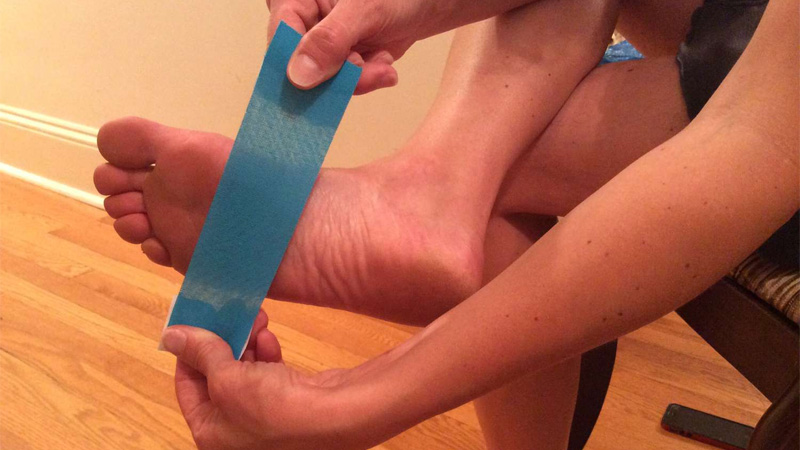
Source: verywellhealth
Athletic tape is an essential item in a soccer player’s kit. It serves multiple purposes, primarily aiding in injury prevention and support. Players often use athletic tape to secure and stabilize joints, such as ankles, knees, and fingers, reducing the risk of sprains and strains.
Additionally, it can be used to protect existing injuries or to provide additional support during matches. Taping techniques can help players maintain proper form and posture, enhancing performance on the field while minimizing the likelihood of injuries.
19. Stopwatch or Timer
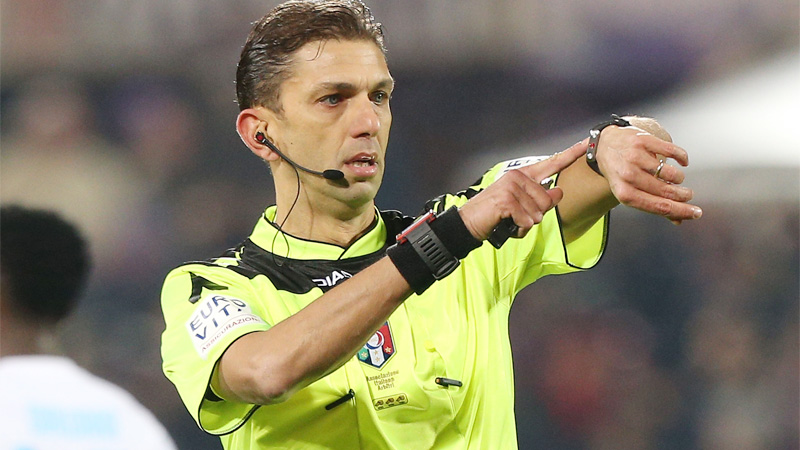
Source: sempreinter
A stopwatch or timer is a fundamental tool for soccer players, coaches, and trainers alike. Training sessions and drills often require specific time frames for different activities, such as sprints, interval training, or rest periods. Players can use the stopwatch to time their runs and improve their speed and endurance.
Coaches and trainers can monitor players’ performance, set goals, and track progress over time. Moreover, a stopwatch is crucial for tactical training, as it allows players to synchronize their movements and practice plays with precision.
20. Substitution Board or Card
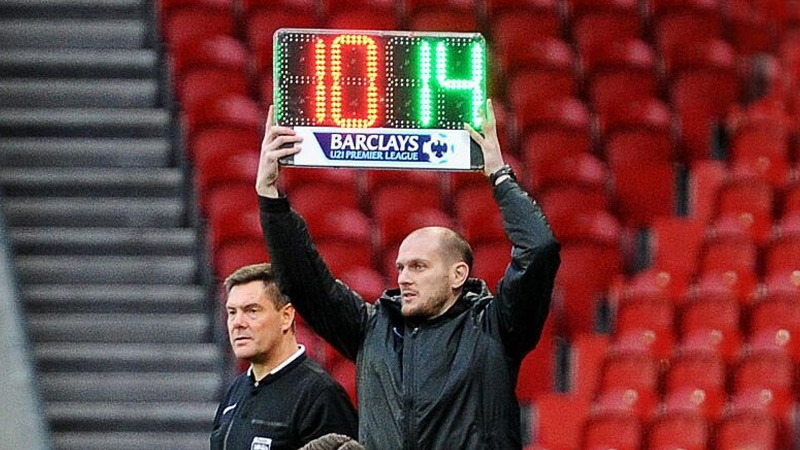
Source: networldsports
The substitution board or card is essential for match officials and players during competitive games. It is used to indicate when a player is being substituted, showing the player’s number who is coming off the field and the number of the player replacing them.
This process ensures smooth substitutions without causing confusion among players, coaches, and spectators. Swift and accurate substitutions help maintain the flow of the game and allow players to rest or adjust tactics effectively.
21. Captain’s Armband
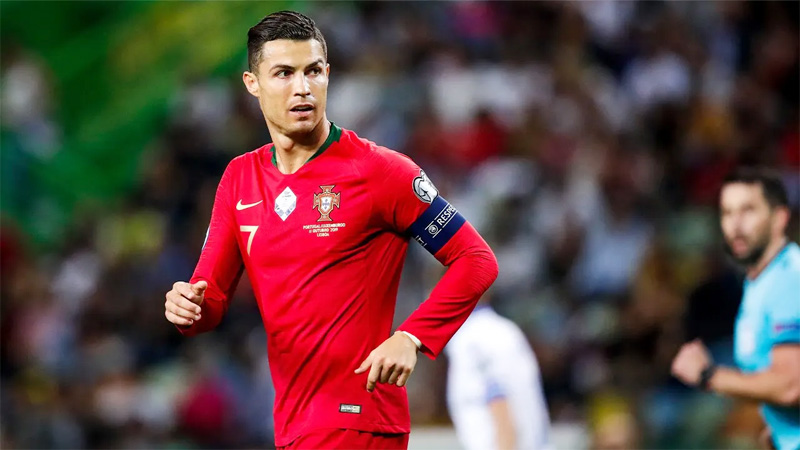
Source: foxsports
The captain’s armband is a symbol of leadership and responsibility on the soccer field. The designated team captain wears the armband to represent the team during the match.
Apart from its symbolic significance, the captain’s armband serves a practical purpose in enabling communication with the match officials. Captains often discuss on-field issues with the referees and help mediate disputes, ensuring that the game is conducted fairly and sportsmanship.
Additionally, the captain’s armband instills a sense of pride and motivation in players, encouraging them to give their best performance to the team.
22. Net for the Goal
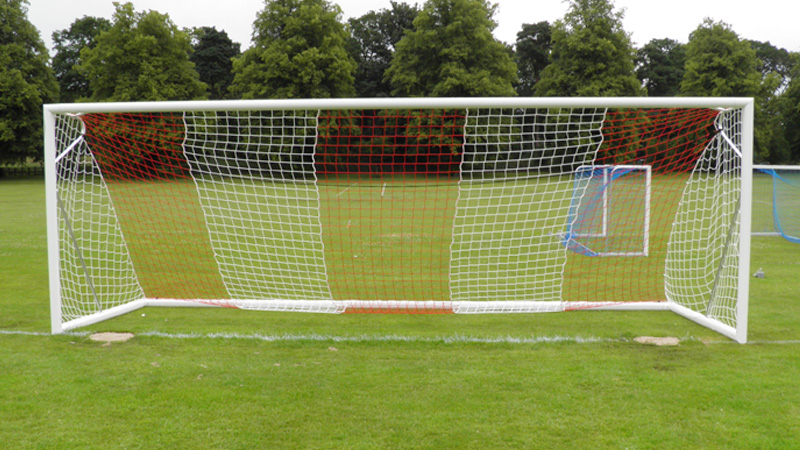
Source: huck-net
Nets for the goal are essential for clear decision-making during a soccer game. They help indicate whether the ball has crossed the goal line entirely, resulting in a goal, or if the shot missed the target.
Nets also prevent the ball from rolling too far away, reducing delays during the game and keeping the pace high. For goalkeepers, nets serve as a visual reference for positioning, aiding them in anticipating shots and making crucial saves.
23. Field Marking Equipment
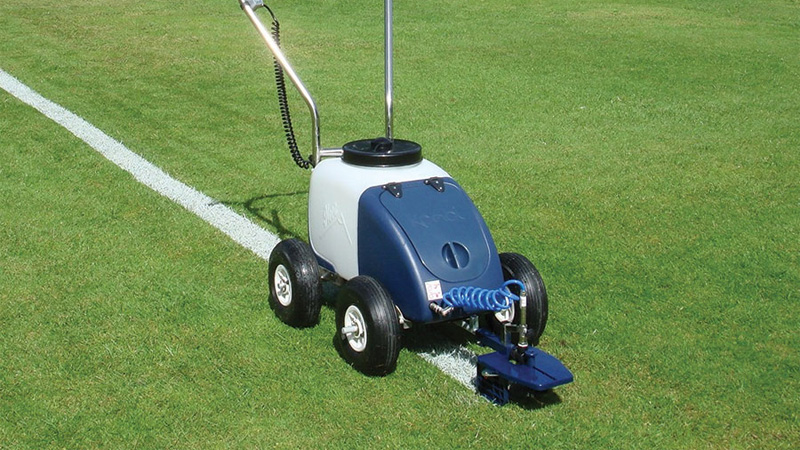
Source: beaconathletics
Field marking equipment is vital for defining the boundaries and markings on the soccer field. Clear and accurate boundary lines ensure fair play and prevent disputes over the ball from going out of bounds.
Lines are used to mark the penalty area, goal area, center circle, and other critical zones guiding players and referees during the game. Additionally, field markings help coaches and players visualize and practice different tactics and set plays.
24. Portable Goals
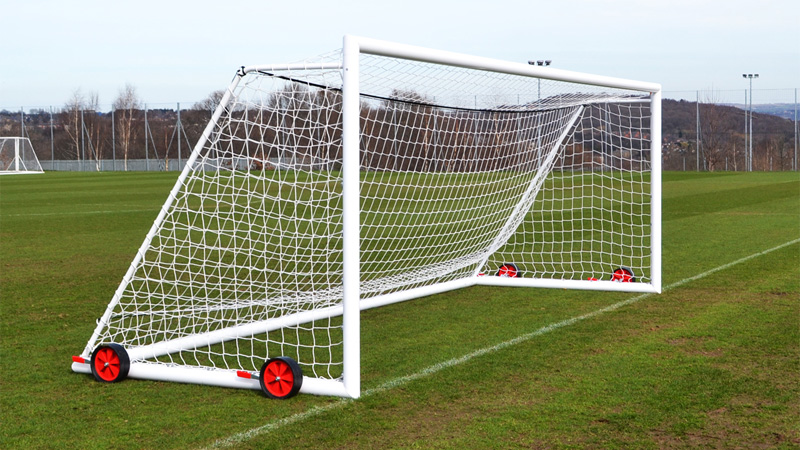
Source: goalfixsports
Portable goals are a valuable asset for soccer players during practice sessions and small-sided games. They are lightweight and easy to move, allowing players to set up smaller fields for skill-building exercises and recreational matches.
These goals are particularly useful for youth soccer, where smaller fields encourage more touches on the ball, increased involvement for all players, and improved decision-making in tight spaces. Portable goals offer flexibility and convenience in training, enabling players to hone their skills in various environments.
FAQs
What is the importance of athletic tape in soccer?
Athletic tape is an essential item in a soccer player’s kit. It provides support and stability to joints, helping prevent injuries and reducing the risk of strains and sprains. Players can use it to protect existing injuries or as a proactive measure to minimize the impact of physical challenges on the field.
Why do players need a stopwatch or timer in soccer?
A stopwatch or timer is invaluable for tracking training progress and optimizing performance. Players can time their sprints, intervals, and rest periods, enabling them to focus on improving their speed and endurance.
Coaches can also use timers to structure training sessions effectively and monitor players’ development over time.
What is the purpose of a substitution board or card in soccer?
Substitution boards or cards are used by match officials to indicate player substitutions during games. They help maintain the flow of the match by providing clear and visible signals to players, coaches, and spectators.
Substitution cards ensure a smooth transition between players, allowing teams to make tactical adjustments and keep players fresh.
Why do soccer players wear captain’s armbands?
The captain’s armband is a symbol of leadership and responsibility. The designated team captain wears it to represent the team on the field and communicate with match officials when necessary.
Apart from its symbolic significance, the captain’s armband instills pride and motivation in players, encouraging them to perform at their best for the team.
How do nets for the goal impact the game of soccer?
Nets for the goal serve multiple purposes. They indicate whether a goal has been scored, providing clarity for players, referees, and spectators. For goalkeepers, nets serve as visual references, aiding in positioning and reaction to shots.
Additionally, nets prevent the ball from rolling too far away, reducing delays and keeping the game’s pace consistent.
Bottom Line
Having the right soccer equipment is fundamental for any player who wants to excel on the field and enjoy the sport safely. From injury prevention with athletic tape to the convenience of portable goals for training, each item in the soccer equipment list plays a vital role in enhancing a player’s experience.
Whether you’re a beginner or a seasoned pro, investing in these essential gear pieces will undoubtedly take your game to the next level. So, gear up and get ready to unleash your full potential on the soccer field!

